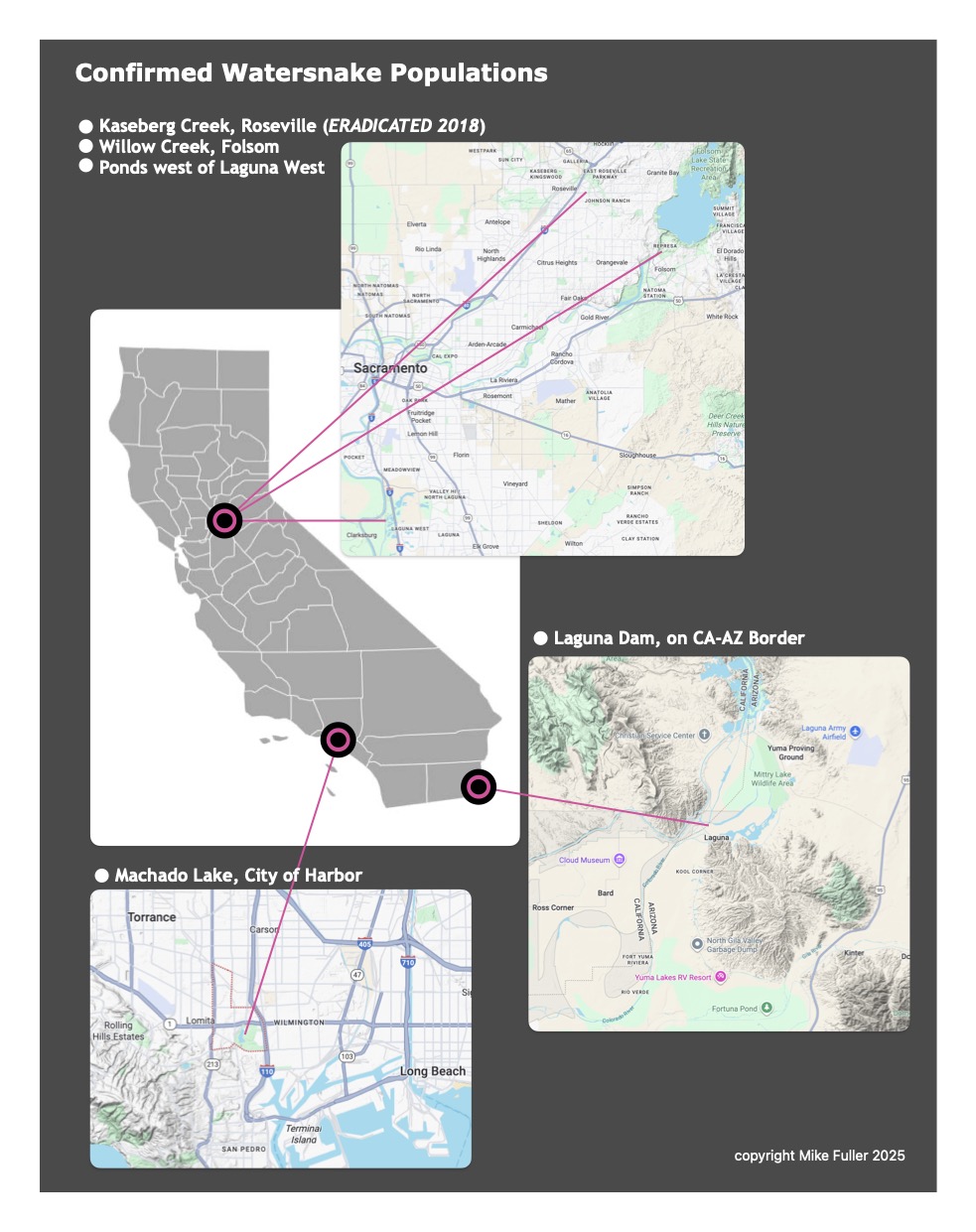Site Information
Watersnakes native to Eastern US now occur in several lakes in California. This site collects sightings to determine if watersnakes are spreading to new areas in California.
Gartersnakes native to California can be mistaken for exotic watersnakes. To help prevent misidentification, we include photos of both species groups for comparison.Think you've seen a watersnake? Upload a photo and we will try to id it.
If you discover a previously unknown watersnake population, we may contact you. Our contact information is below.
Upload a Photo (requires login)
Confirmed Photos of Non-Native Watersnakes
Click to Enlarge
Confirmed Photos of Native Gartersnakes
Click to Enlarge
Other Snakes Uploaded
Click to Enlarge
Map of Known Watersnake Populations

Watersnake Information
Not all swimming snakes are watersnakes
Native gartersnakes (genus Thamnophis) are often seen in or near water. Watersnakes (genus Nerodia) have heavier bodies, different head shapes, and distinctive banding. When in doubt, upload a photo— we can help identify it.
Please include contact information with your photo. We may contact you if you discover a previously unknown watersnake population.
Threat posed by non-native watersnakes
Introduced watersnakes may compete with native species for habitat and prey, can bring diseases and parasites that infect native species, and can spread into new watersheds via connected canals and rivers.
How did watersnakes arrive?
Most introductions trace back to the live pet trade and purposeful and accidental releases. Early detection and reporting helps limit establishment.
Legal Status of Pet Watersnakes in California
As of January 2008, all non-native watersnakes (genus Nerodia) are regulated as restricted animals by the California Department
of Fish and Game (Sec. 671, Title 14, Calif. Code of Regulations).
It is now unlawful to import, transport, or possess watersnakes in California without a permit.
If you are currently in possession of one or more watersnakes, PLEASE DO NOT RELEASE THEM. The snakes should be disposed of humanely,
such as with the assistance of a veterinarian.